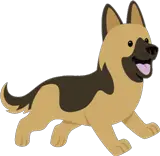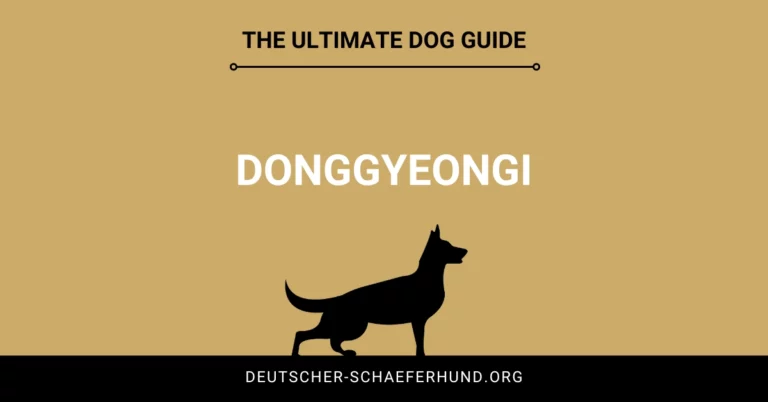Introduction
Welcome to our comprehensive guide to the Donggyeongi. If you’ve ever wondered about this charming breed from the Land of Morning Calm, then you’ve come to the right place. Let’s dive into the fascinating world of these lovable canines, their history, their characteristics, and why they’re so important in Korean culture.
| Attribute | Description |
|---|---|
| Breed Name | Donggyeongi |
| Origin | Gyeongju, South Korea |
| Size | Medium |
| Coat Type | Dense, long, shaggy |
| Coat Color | Yellow, black, mixed |
| Life Span | 10-14 years |
| Temperament | Calm, affectionate, loyal, intelligent |
| Diet | Proteins, carbs, fats (Consult with the vet for personalized advice) |
| Exercise Needs | Regular exercise and mental stimulation |
| Training | Positive reinforcement, consistent training with rewards |
| Health Checkups | Regular vet checkups and vaccinations |
| Role in History | Protectors, a symbol of good fortune in ancient Korea |
| Current Status | Growing popularity in Korea and worldwide |
Characteristics of Donggyeongi
Physical Characteristics
Donggyeongi is medium-sized dogs with distinctly noble and gentle appearances. They typically have dense, long, and shaggy hair that may be yellow, black, or mixed. With their bright eyes and bushy tails, they have a demeanor that’s hard to resist.
Behavioral Characteristics
Known for their intelligence and loyalty, Donggyeongi are generally calm and affectionate dogs. They’re great with kids and families, and they make excellent companions. They’re also known for their protective nature, making them reliable guardians.
Health and Lifespan
These dogs are generally healthy with a typical lifespan ranging from 10 to 14 years. Like any breed, they may be prone to certain genetic conditions, so regular checkups with a veterinarian are recommended.
Historical Significance of Donggyeongi
The Role of Donggyeongi in Ancient Korea
Historically, Donggyeongi played important roles in Korean society. They were regarded as protectors, warding off evil spirits and bringing good luck to households.
Symbolic Importance of Donggyeongi
In addition to their practical roles, Donggyeongi holds symbolic significance in Korean culture. They are often seen in ancient Korean art and folklore, symbolizing loyalty and bravery.
The Near Extinction and Revival of the Breed
Tragically, the breed almost vanished during the mid-20th century due to war and economic hardship. However, through dedicated breeding programs and conservation efforts, Donggyeongi has made a triumphant return.
Donggyeongi in Modern Times
Current Status of the Breed in Korea and Worldwide
Today, the breed is growing in popularity not just in Korea, but worldwide. They’re recognized for their unique characteristics and the role they play in Korean heritage.
Recognition by Kennel Clubs and Breed Associations
While not widely recognized by international kennel clubs, the breed is cherished in Korea, with active efforts underway to gain broader recognition.
The Donggyeongi as a Family Pet
Their mild temperament, intelligence, and loyalty make them excellent family pets. They’re friendly with kids, making them a beloved addition to any home.
Caring for a Donggyeongi
Dietary Needs
Donggyeongi, like any other dog, needs a balanced diet of proteins, carbs, and fats. A mix of dry and wet food is usually preferred, but it’s best to consult with a vet for personalized advice.
Exercise and Play Requirements
Being active dogs, they need regular exercise to stay healthy. Regular walks, play sessions, and mental stimulation are essential.
Training Tips for Donggyeongi Owners
Positive reinforcement works best with this breed. Start training early, keep it consistent, and always use rewards and praises.
Health Checkups and Vaccination Requirements
Regular vet checkups are necessary to maintain their health. Keeping up with vaccinations is equally vital.
Donggyeongi in Popular Culture
Famous Donggyeongi in Media
While not yet widely recognized in global media, there are several Korean TV shows and films featuring this adorable breed.
The Portrayal of Donggyeongi in Films, TV, and Literature
In local Korean dramas and movies, Donggyeongi is often portrayed as loyal companions, reflecting their historical significance.
Advocacy and Conservation Efforts
Korean Government’s Efforts in Preserving the Breed
The Korean government has made commendable efforts to preserve this breed. They have introduced several programs aimed at increasing the population of these dogs.
Non-governmental Organizations (NGOs) and Their Roles
Several NGOs work tirelessly to protect and promote this breed. Their work includes rescue operations, public education, and adoption programs.
How Individuals Can Contribute to the Conservation Efforts
Every individual can play a part in conservation, be it through adopting, volunteering, or supporting NGOs in their mission.
Role of Donggyeongi in Traditional Rituals
Donggyeongi in Folklore and Rituals
In ancient Korea, Donggyeongi were often part of traditional ceremonies and rituals. Their protective nature made them symbols of good fortune and wardens against evil spirits. This historical association still lingers in some parts of Korean culture, where dogs are held in high regard and often associated with auspicious events.
Donggyeongi and Other Korean Breeds
Comparison with Other Korean Dog Breeds
Korea is home to several native dog breeds, each with its own unique characteristics. The Donggyeongi, with its shaggy coat and gentle temperament, stands out from others like the Jindo, known for its hunting skills, or the Sapsali, famed for its lion-like appearance. Understanding these differences is key to appreciating the diversity of Korean canine heritage.
Considerations Before Adopting a Donggyeongi
Factors to Consider When Adopting a Donggyeongi
Before you decide to bring a Donggyeongi into your home, there are several factors to consider. This breed requires a significant amount of grooming due to its long hair. They also require ample space to move around, and would not be well-suited for a small apartment. While they are generally good with children, their interactions should always be supervised to ensure the safety of both the dog and the child.
The Adoption Process
Adopting a Donggyeongi, like any other breed, is a serious commitment. The process usually involves an application to ensure a suitable home environment, interviews, and often, a home visit. This process ensures the well-being of the dog and helps ensure successful integration into their new family.
Donggyeongi as Therapy Dogs
The Therapeutic Value of Donggyeongi
Given their calm demeanor and empathetic nature, Donggyeongi can make excellent therapy dogs. They can provide emotional support and unconditional love to individuals suffering from mental health disorders such as depression, anxiety, or PTSD. Their soothing presence can also be beneficial in educational or healthcare settings, helping to reduce stress and anxiety.
Adapting to Different Climates
How Donggyeongi Fare in Various Weather Conditions
Donggyeongi dogs are quite hardy and adaptable, thanks to their dense, shaggy coat that protects them from harsh weather conditions. While they are well-suited to colder climates, they can also adapt to warmer weather. However, during hot summer months, it’s crucial to provide them with plenty of shade and water and avoid taking them out during the peak heat hours.
Interesting Facts about Donggyeongi
Unique Aspects of Donggyeongi Breed
Despite their historical near-extinction, Donggyeongi dogs have one of the most diverse genetic pools among all Korean dog breeds. This genetic diversity contributes to their overall health and longevity. Another fun fact is that Donggyeongi puppies are born with short tails that gradually elongate as they grow into adulthood.
Donggyeongi in World Dog Shows
Although Donggyeongi is not widely recognized by international kennel clubs yet, they have made appearances in several dog shows worldwide. These events not only showcase their unique characteristics but also serve as a platform to raise awareness about this nearly forgotten breed.
Conclusion
We’ve journeyed through the history, characteristics, and cultural significance of these beautiful canines. As we look toward the future, it’s clear that the story of Donggyeongi is one of resilience and rebirth. They are more than just dogs; they are a proud part of Korean heritage, a symbol of loyalty and perseverance. And so, as we continue to cherish and care for these wonderful creatures, we also preserve a vital piece of a culture’s history and identity. Let’s celebrate the Donggyeongi, and let their story inspire us.



